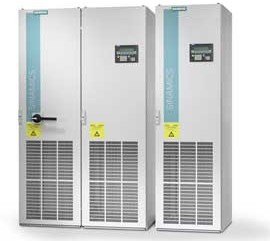THINK ABOUT COOLING … from the beginning
Cooling needs should be evaluated early in the design process. Nearly all systems require some degree of forced cooling. Early estimates of the location of components in the cabinet, the heat to be dissipated, and the amount of space needed for the cooling device will save time, trouble and expense.
AMBIENT AIR VS. CLOSED-LOOP COOLING
Keep it simple. If ambient air is cool and clean enough, use it. It’s free. If the ambient is too hot, dirty or corrosive, a closed-loop system is needed. A Heat Exchanger is usually a lower-cost choice than an Air Conditioner. See if it will do the job. Don’t over-cool. Don’t oversize the cooling equipment.
FAN OR BLOWER?
Industrial fans are designed to move large volumes of air at low static pressure. Blowers are used in higher static pressure applications, and are at maximum efficiency when operating near their peak static pressure.
Pressurization of the cabinet is far more desirable than drawing the air out. Plan to pump filtered air INTO the cabinet, to gain the advantage of using cracks between panels, around doors or other small openings as part of the exhaust area rather than as sources for the intake of dust and dirt. If pressurization is impossible and a fan or blower must be used to exhaust the enclosure, a filter at the air inlet is recommended.
KEEP IT CLEAN
Nothing is more important than CLEAN filters. Clogged filters restrict airflow and cause motors, compressors, etc. to work harder and fail prematurely. Timely filter servicing is vital to your system.
KEEP INLET AND EXHAUST AIR FAR APART
Be sure that all of the exhaust area is located downstream, as far as possible from the air inlet and beyond all heat-producing components. An open-base cabinet sitting only one-quarter inch off the floor can waste a substantial percentage of cooling air even if the air is directed upward initially. A properly planned air path will avoid all “short circuits” or losses by forcing the cool supply air to pass through the components that are to be cooled before reaching the exhaust area. This will allow for a maximum of cooling efficiency.
LET NATURE HELP
Cooling air should enter the enclosure from as low as possible and leave the enclosure from above the highest hot component. Thus, the forced air flows upward through the heat-producing components and adds to the natural buoyancy of the heated air.
A “BOOSTER” CAN SAVE SPACE AND COST
A booster fan located downstream or at the outlet can draw added cooling power through densely packed components. It could permit the use of a smaller, quieter packaged blower than originally indicated, allowing more panel space for other uses.
ENTERING AIR NEEDS EXIT ROOM
The cross-section area of the airstream throughout the flow path in the cabinet should be at least equal to the effective area of the air intake. If this ratio is less, “choking” of the delivered air may result. On the basis of the average grille material, with 65% open or effective area, the following table gives the typical effective area that should be allowed for discharge.
For intake and exhaust grille and filter grille assemblies, use the Accessories and Options section.
USE DUCTS FOR EVEN COOLING
If the maintenance of an even temperature from top to bottom of the enclosure is important, sducts along the sides of the enclosure offer an ideal solution. Multiple duct outlets allow precise control of the location and quantity of air delivered.
COMPONENT LOCATION
Where possible, locate heat sensitive electrical components toward the bottom of the enclosure, since the warmest air temperatures will be at the top. Maintain adequate spacing between components within the enclosure to minimize air flow restriction.
BAFFLES SOMETIMES WORK WONDERS
At times, an excessively hot component or an isolated area in the enclosure presents a problem in an otherwise well-cooled system. A baffle to channel air across the location is often the best solution.
VIBRATION ISOLATION
Neoprene vibration isolators minimize the possibility of trouble associated with vibration. All portions of a system will respond to periodic forces in varying degrees. This excitation can occur regardless of the balance or design of the air-moving equipment, since any given construction could be in harmony with any of the driving forces in the blower motor. If the sympathetic vibration level is unacceptable, slight weight change or redistribution will usually alleviate the problem.
